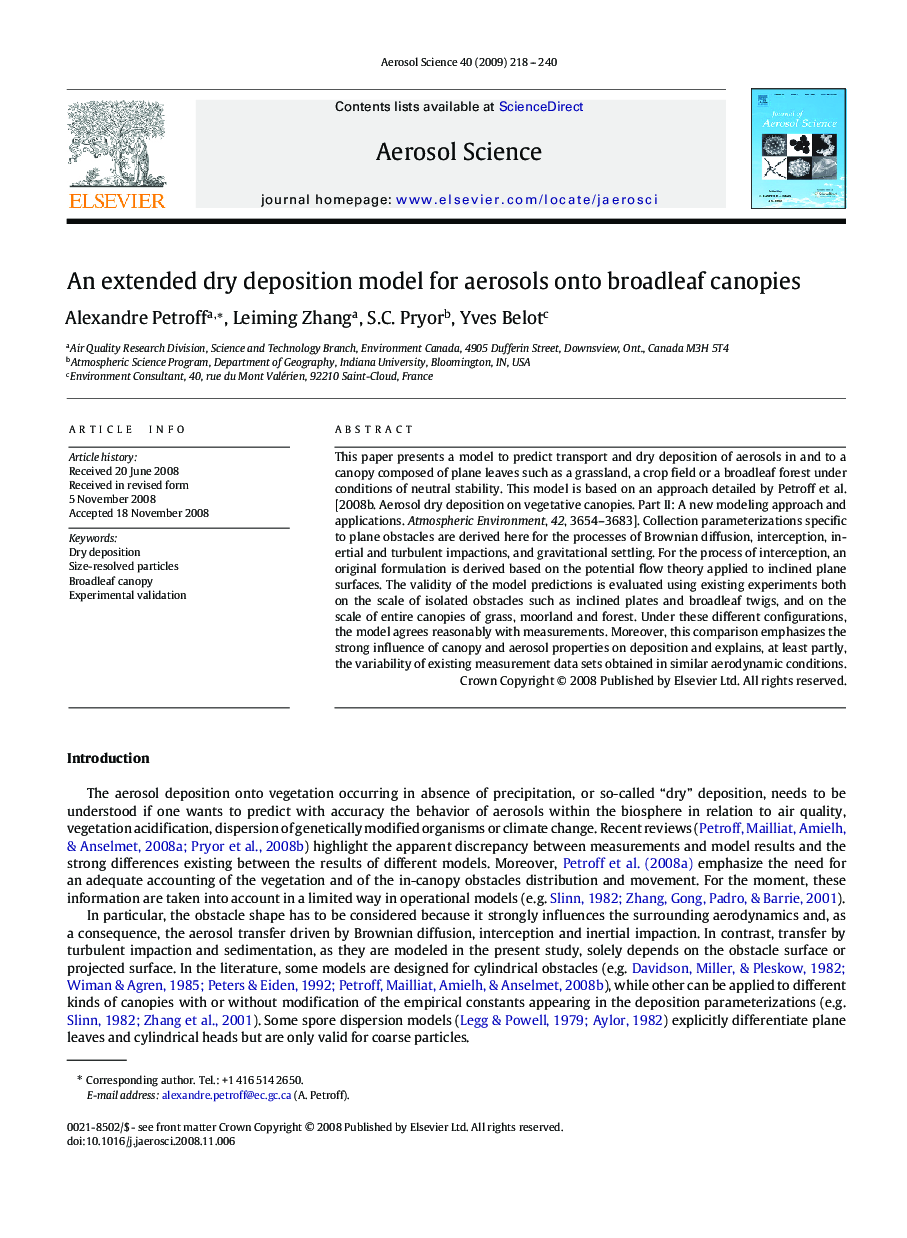| Article ID | Journal | Published Year | Pages | File Type |
|---|---|---|---|---|
| 4453094 | Journal of Aerosol Science | 2009 | 23 Pages |
This paper presents a model to predict transport and dry deposition of aerosols in and to a canopy composed of plane leaves such as a grassland, a crop field or a broadleaf forest under conditions of neutral stability. This model is based on an approach detailed by Petroff et al. [2008b. Aerosol dry deposition on vegetative canopies. Part II: A new modeling approach and applications. Atmospheric Environment, 42, 3654–3683]. Collection parameterizations specific to plane obstacles are derived here for the processes of Brownian diffusion, interception, inertial and turbulent impactions, and gravitational settling. For the process of interception, an original formulation is derived based on the potential flow theory applied to inclined plane surfaces. The validity of the model predictions is evaluated using existing experiments both on the scale of isolated obstacles such as inclined plates and broadleaf twigs, and on the scale of entire canopies of grass, moorland and forest. Under these different configurations, the model agrees reasonably with measurements. Moreover, this comparison emphasizes the strong influence of canopy and aerosol properties on deposition and explains, at least partly, the variability of existing measurement data sets obtained in similar aerodynamic conditions.
